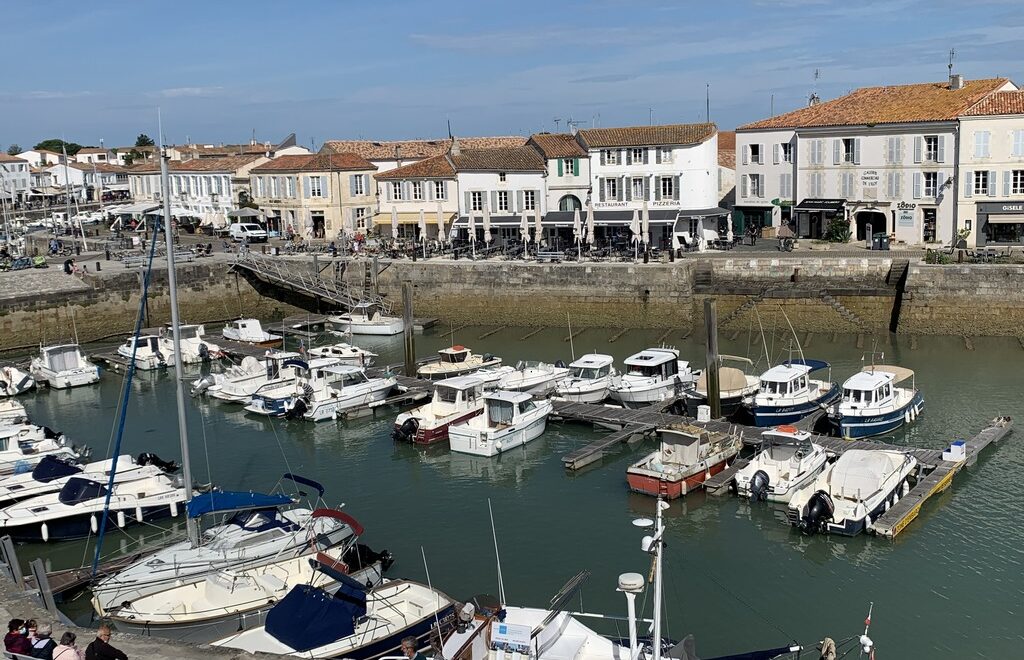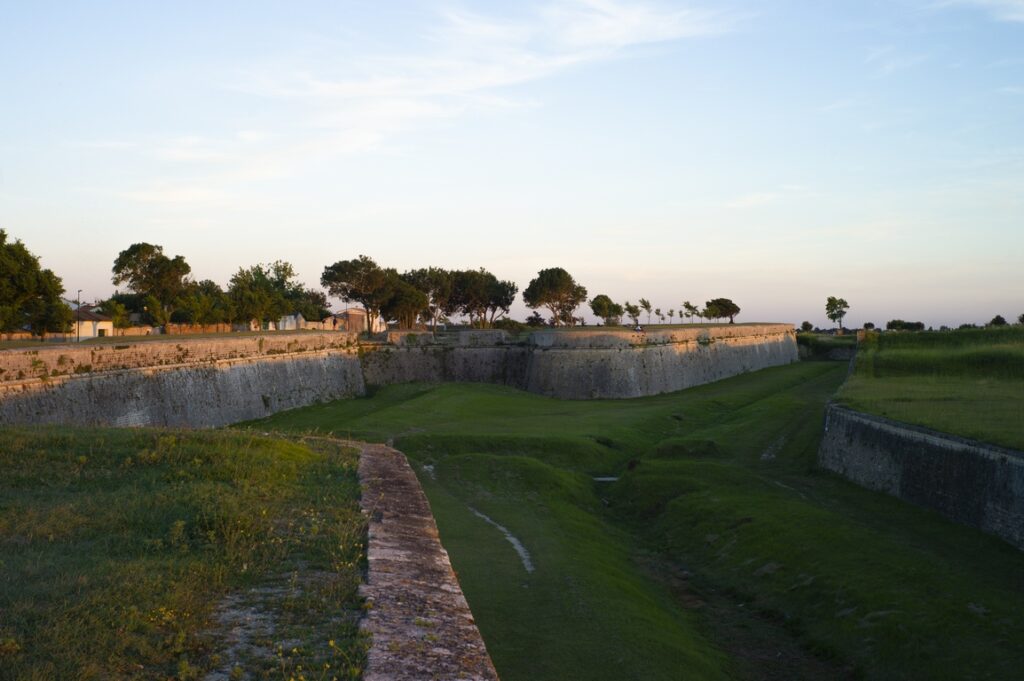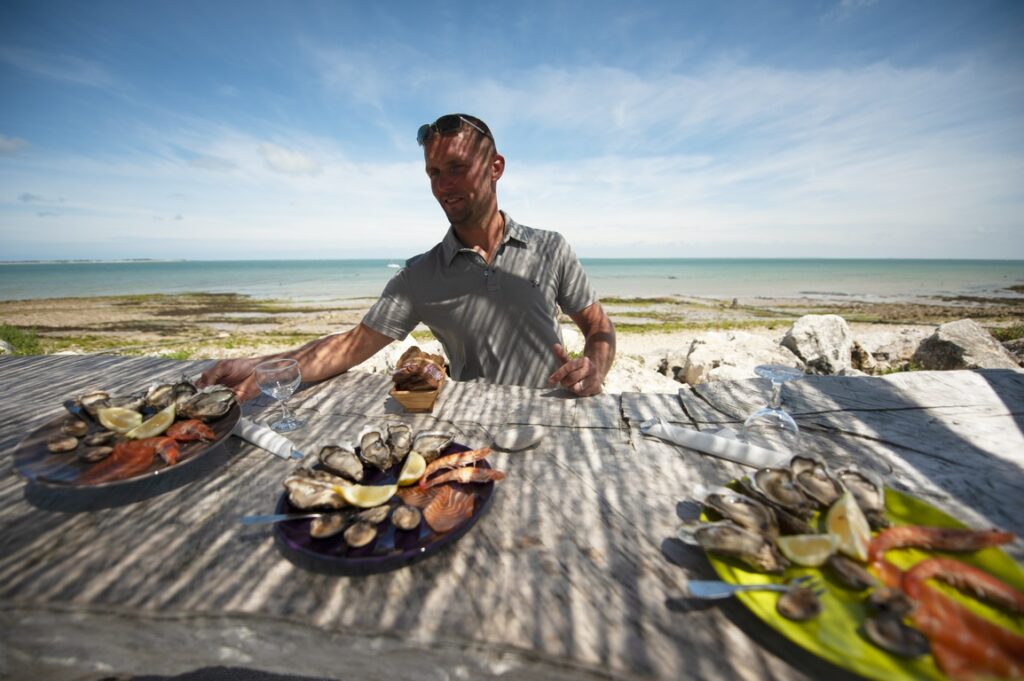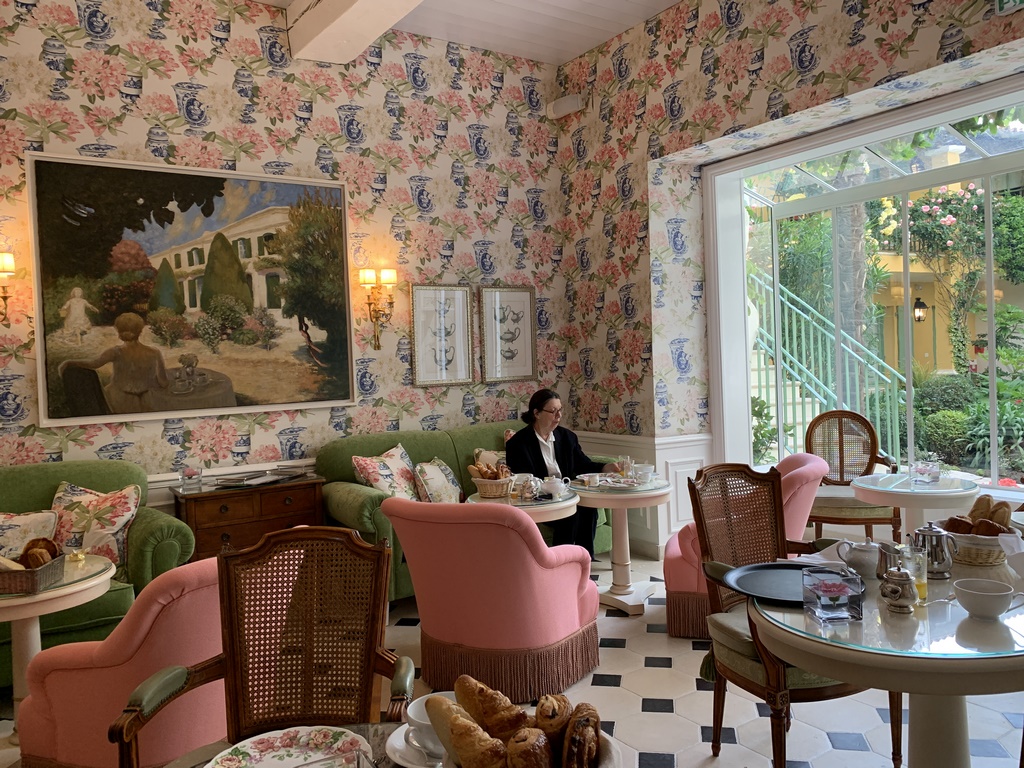
With nine white villages, a number of colourful harbours, a soft light and a 2.9km bridge that rises above the waves and has linked the island to the mainland since 1988, the island of Ré boasts a natural heritage of exceptional beauty. Not to mention the tourists who flock to the chic Charente island in the summer.

As soon as you cross the bridge, you can see the tip of the Sainte Marie bell tower on the south side of the island. As you pass through the villages, the coast produces oysters and fish. In the gardens, you'll find PDO early potatoes, a firm favourite with gourmets, and asparagus. Not forgetting the vines and the salt, which smells of violets and preserves food without cooking it.

You'd have to think you were an adventurer to leave the bustling village of St-Martin and pedal along the Loix and La Couarde paths towards the salt marshes, set against a backdrop of liquid and plant life. You can imagine them lost in the middle of nowhere, between the sea and a mosaic of salt marshes, a paradise for wild flora and fauna: migratory birds (geese, terns, etc.) and plants (glasswort, maceron, obione).

Situated on the main Atlantic migration route, the Réserve naturelle nationale de Lilleau des Niges Every year, it is home to thousands of birds: geese and ducks in winter, blue throats and terns in spring, and species that are uncommon in France: the Belon shelduck, the elegant avocet, the white stilt, etc. Visit Maison du FierThe former salt shed on the Ile de Ré, next to the old port of Les Portes-en-Ré, is an Échappées Nature site. These are sensitive natural areas that welcome visitors all year round. 14 site houses, spread across the Charente-Maritime region, open their doors to you and organise activities that get you as close to nature as possible: nature workshops, guided tours, unusual outings at dusk?
A few more pedal strokes to paddle the marshes, see the beaches, or take advantage of the natural wellbeing in the establishments. Thalasso side in Ars-en-Ré. It's finally time to stop off at the Vignerons cooperative, recognisable by its cylindrical tower on the road to Sainte-Marie. Here, cognac, pineau, white, red and rosé wines are vinified, matured and distilled. The local "celebrity" is "trousse-chemise", a sparkling white wine made from Chardonnay grapes.
Saint-Martin-de-Ré, a village of incomparable charm

To get to the village of Saint-Martin, which has been known since the 12th century, you have to cross the Bouygues bridge, which costs ?16 each way in summer, ?8 out of season and is free for local residents. With the (still) chargeable bridge, which brings in 13 million euros a year, the Ile de Ré is the envy of many. However, the invasion of cars during the summer months has not reached Saint-Martin.
It is easy to imagine a time when the village was populated by craftsmen, traders and merchants who exported wine and salt and imported cereals and timber. Its commercial and strategic importance placed the village at the centre of various forms of covetousness, particularly from the English and Dutch.

A 3-month siege in 1627 by the Duke of Buckingham led Sébastien Le Prestre de Vauban, then King Louis XIV's engineer, to build the fortifications and citadel between 1681 and 1685, while developing the port and seafront.

The port (a UNESCO World Heritage Site), with its terraces, sailing boats and pleasure craft, has not changed much since then, and the magnificent fortifications are still intact. At the foot of the church, half-timbered houses with green shutters and hollyhocks are part of the scenery.
An advanced bastion of La Rochelle, the Huguenot capital, the island was not spared by the Wars of Religion. The town is entered through 2 gates built in 1685: the Porte des Campani with its ten stone arches to the west and the Porte de Toiras to the east.
There are half-timbered houses such as the 17th-century Maison de la Vinatrie, whose ornamentation symbolises the cultivation of vines, and the Musée Ernest-Cognacq, housed in the beautiful Hôtel de Clerjotte, a late 15th-century dwelling. It boasts collections of model ships and Delft porcelain. In the gardens, the statue of George Washington (an exact replica of the one in Virginia) is a reminder of his distant origins: his ancestor, Nicolas Martiau, a Protestant from Rétais, is said to have been the first French Huguenot to land in Virginia on 11 May 1620, where he founded Yorktown. He died there in 1657. It is even said that this intrepid man from Rétais is also an ancestor (in the 11th generation) of Queen Elizabeth II of England and Tom Cruise.
Cycling enthusiasts who have savoured the scents of the sea through the salt marshes and vineyards know that the clouds always rise in honour of the sunset over the Citadelle, a military structure built at the end of the 17th century. century to protect the island. It is one of the main historical monuments in the town of Saint-Martin-de-Ré and is now a prison. The list of guests it has housed is long: Papillon, Seznec, political prisoners and thieves sentenced to the colonial prisons of Cayenne and New Caledonia.
Hotel de Toiras A unique 5-star establishment

overlooking the port of Saint-Martin-de-Ré, has become a major player in the tourist life of the Ile de Ré.
Named after the eponymous marshal who defended the island against the English invaders in the 17th century, theHotel de Toiras is a former seventeenth-century shipowner?s house flanked by a turret. Directly opposite the port of Saint-Martin-de-Ré, the windows of its white facade open onto the spectacle of the boats. Olivia le Calvez has owned the house since 2002. "So I'm the Prince Consortjoked Didier le Calvez, her husband. This great hotel professional was Director of the Bristol in Paris for 6 years and then CEO of La Réserve hotels.
The hotel has 20 rooms and suites spread over 2 floors. They are all different, dedicated to Marshal de Toiras, Pierre Loti, Vauban? and of course George Washington, whose ancestor came from the Ile de Ré. The fabrics are by Pierre Frey, Canovas, Brunschwig and Ralph Lauren. In this country residence, a modern state of mind reigns, made up of elegant choices. This is one of the talents of interior designer Pierre-Yves Rochon, whose use of colours, materials and objects has created a sense of clarity, freedom and space. The décor takes on a seaside feel: the lobby is bathed in luminous azure blue tones, while George?s restaurant (a reference to the future King of England George VII!) boasts a chic marine style in harmony with the vast terrace (80 seats), which features live music by Maison Sérieuse and a breathtaking view of the port. A very private garden and a bar area have been created to cater for the English, Belgian, Swiss and Spanish clientele who have fallen in love with this iodised stopover.
For more information
www.iledere.com
Charentes Tourist Office
www.infiniment-charentes.com
Paddle in the marshes with Sup Evasion
www.supevasion.com
Thalasso
https://iledere.relaisthalasso.com/fr
Restaurant La Cabane du Grouin in Loix
https://www.lacabanedugrouin.fr/
Text and photos: Michèle Lasseur




